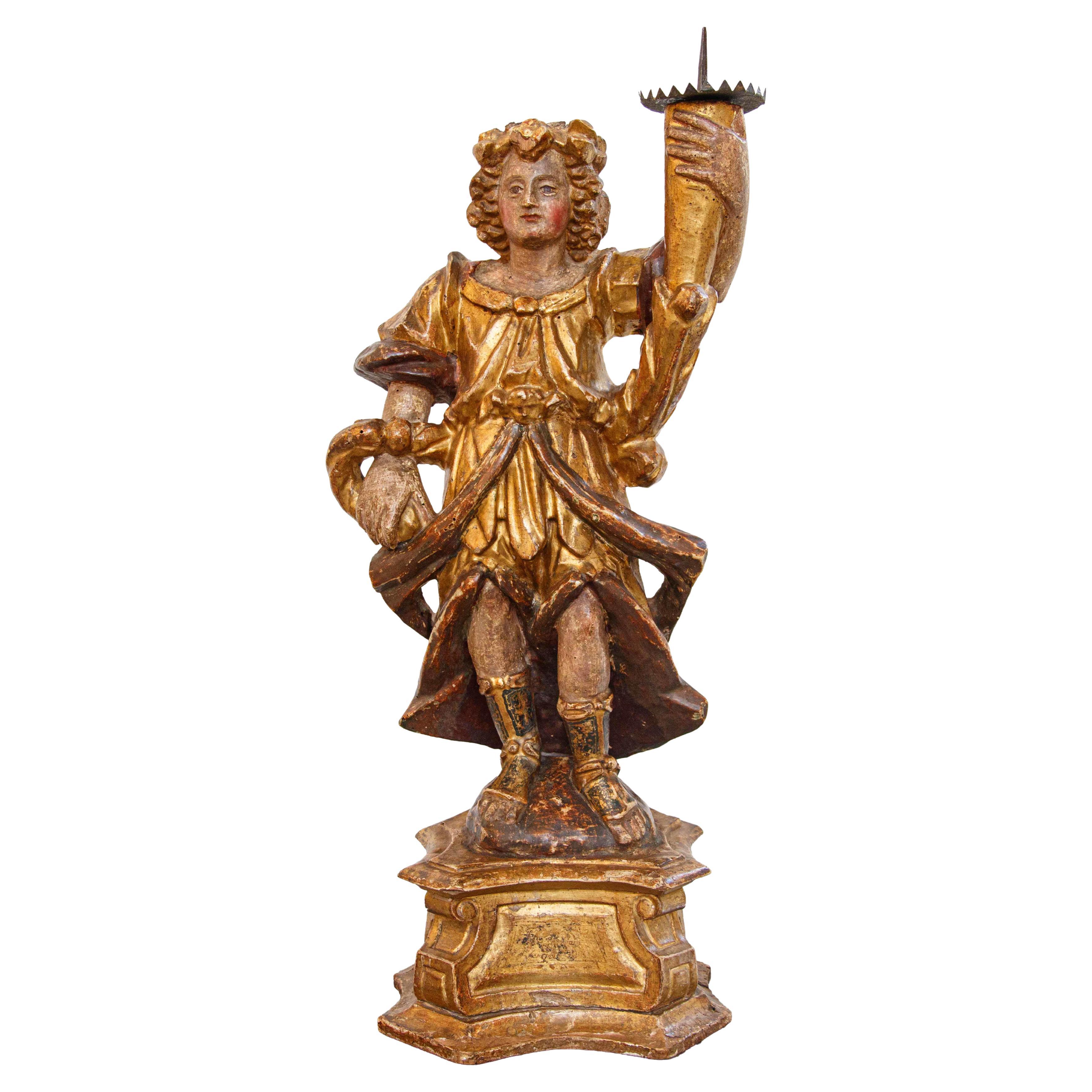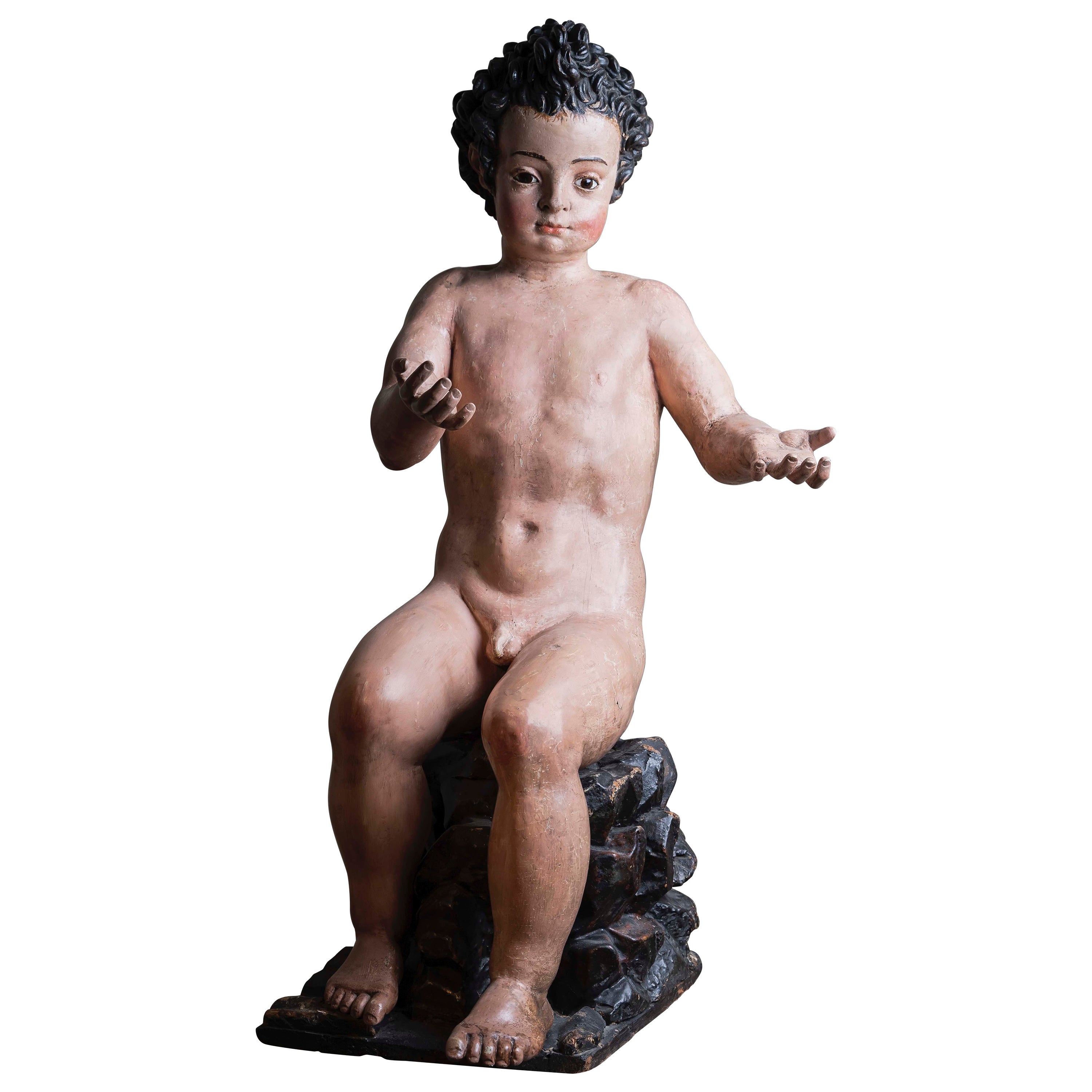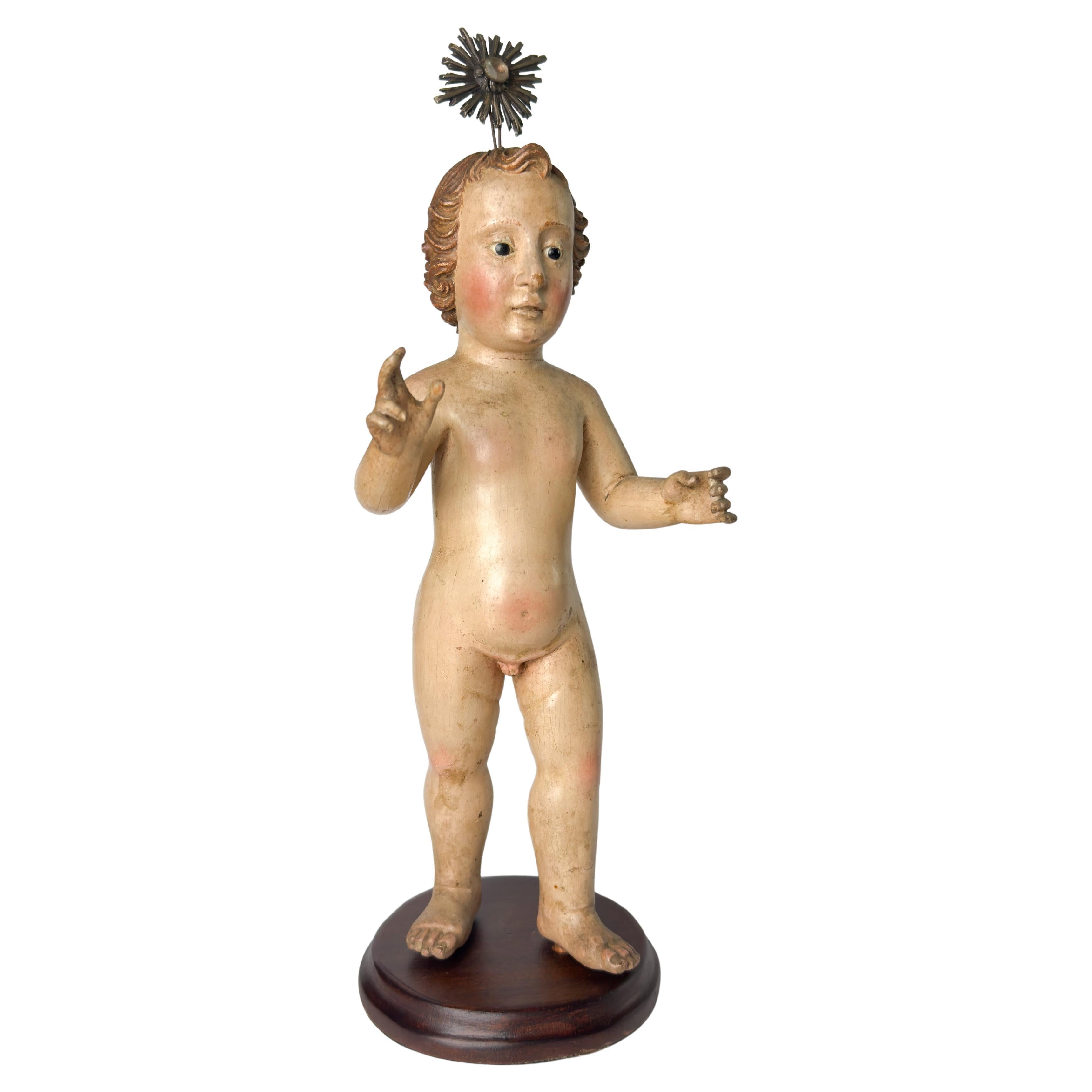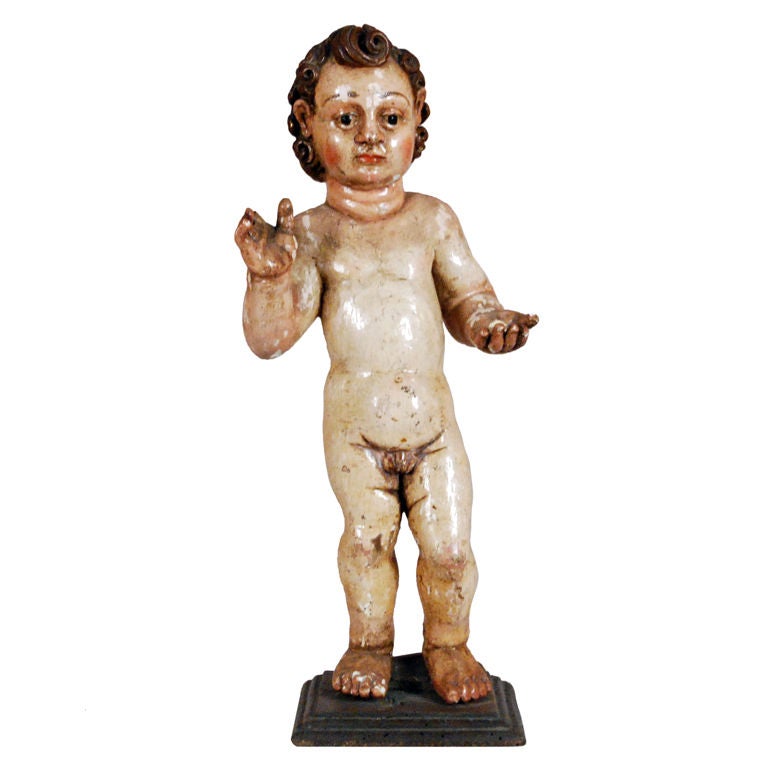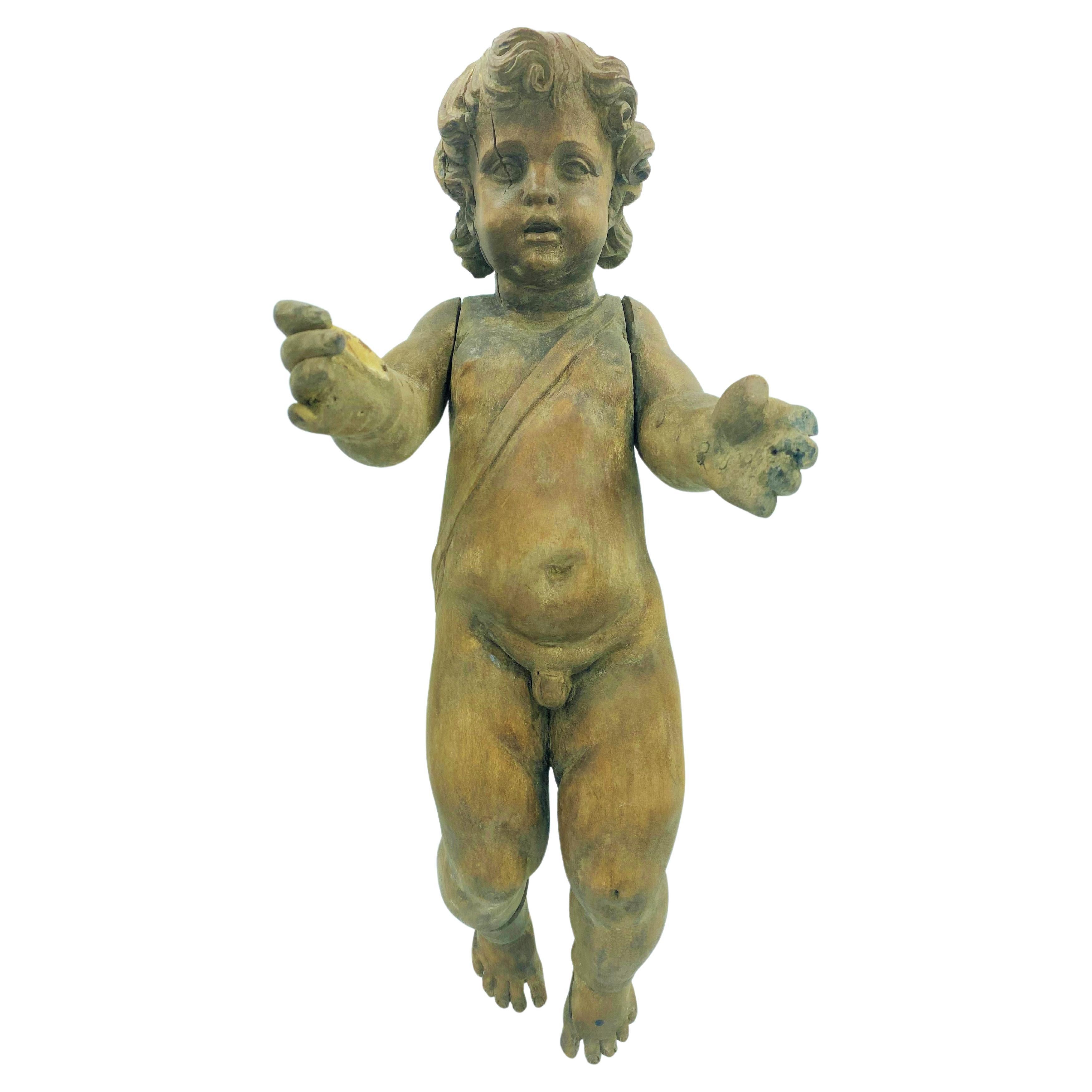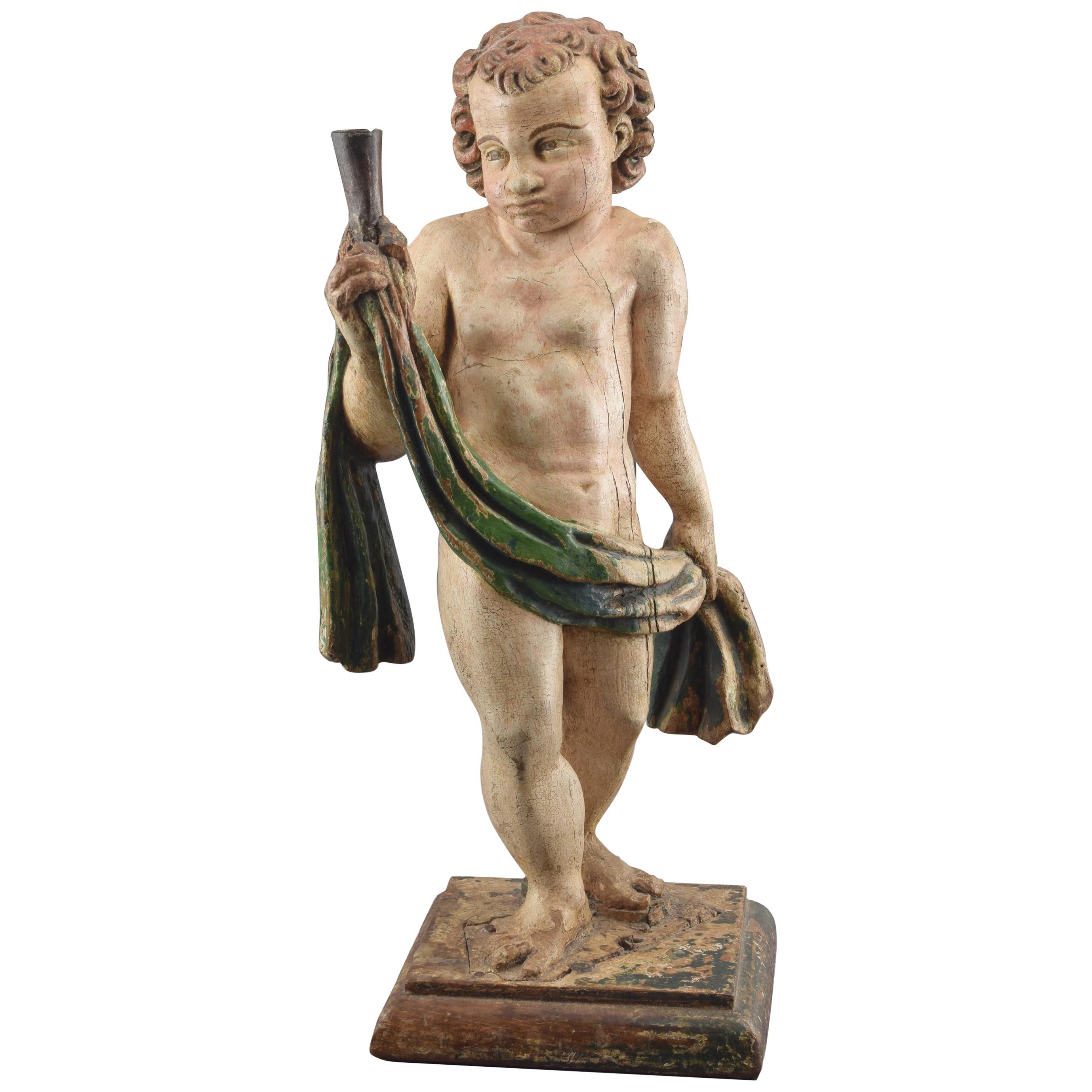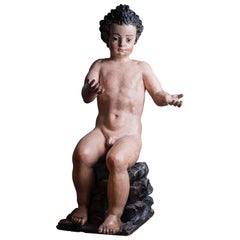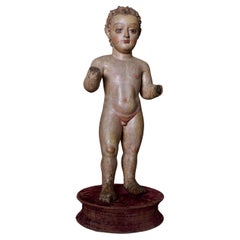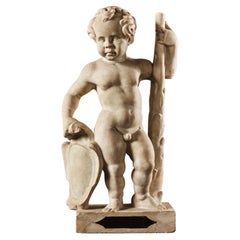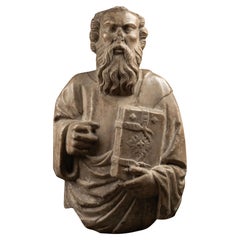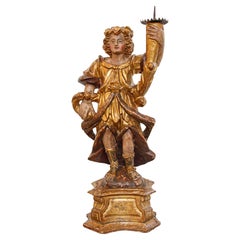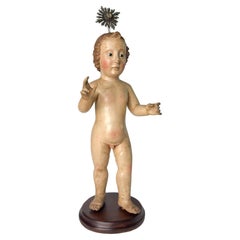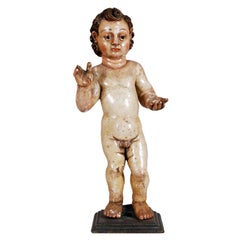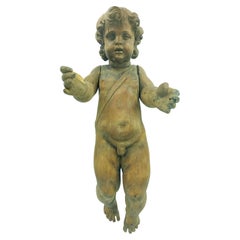Items Similar to Cercle of Romano Alberti, Page, Around 1530-1540
Want more images or videos?
Request additional images or videos from the seller
1 of 5
Cercle of Romano Alberti, Page, Around 1530-1540
$12,329.29
$18,968.1435% Off
£9,234.25
£14,206.5335% Off
€10,400
€16,00035% Off
CA$17,306.13
CA$26,624.8235% Off
A$18,930.95
A$29,124.5435% Off
CHF 9,863.27
CHF 15,174.2735% Off
MX$227,781.85
MX$350,433.6235% Off
NOK 124,905.23
NOK 192,161.8935% Off
SEK 117,274.04
SEK 180,421.5935% Off
DKK 79,215.74
DKK 121,870.3735% Off
About the Item
Cercle of Romano Alberti, dit Il Nero da Sansepolcro ( San Sepolcro, 1521-1568 )
Page
Mixed media : wood core, papier mâché, stucco, polychrome and gilded
Italy, around 1530-1540
88 cm
This page is one of a number of sculptures that are similarly constructed in stucco and wood using the mixed media technique and today attributed To Romano Alberti and his circle. We can appreciate it by focusing on his tunic and his sandals, recalling the earliest sixteenth century Umbrian sculptors, those from San Sepolcro especially. Romano Alberti, better know as Nero today or as Magione Master in the recent past, was surely the most important of them.
Their inner poplar wood structure was usually human being shaped. Some paper-mâché was attached to the sculpture and suddenly covered with some gypsum. Then, as they got dried, he painted the layers carefully.
Bibliographie :
- C. Galassi, Sculture da vestire : Nero Alberti da San Sepolcro e la produzione di manichini lignei in una bottega del Cinquecento. Firenze Electa ; Editori Umbri Associati, 2005
- C. Galassi, « Arte e serialità nella bottega di Nero Alberti a Sansepolcro », In Nero Alberti, 2005
- E. Neri. Lusanna, « Tra arte e devozione : la tradizione dei manichini lignei nella scultura umbro-marchigiana della prima metà del Cinquecento » in G. B. Fidanza, scultura e arredo in legno fra Marche e Umbria, Atti del Primo convegno, Pergola 24-25 ottobre 1997, Perugia 1999.
- Dimensions:Height: 34.65 in (88 cm)Width: 13.78 in (35 cm)Depth: 7.49 in (19 cm)
- Style:Renaissance (Of the Period)
- Materials and Techniques:
- Place of Origin:
- Period:
- Date of Manufacture:16th Century
- Condition:Wear consistent with age and use.
- Seller Location:Bruxelles, BE
- Reference Number:1stDibs: LU6666229644172
About the Seller
5.0
Vetted Professional Seller
Every seller passes strict standards for authenticity and reliability
1stDibs seller since 2022
15 sales on 1stDibs
Typical response time: <1 hour
- ShippingRetrieving quote...Shipping from: Bruxelles, Belgium
- Return Policy
Authenticity Guarantee
In the unlikely event there’s an issue with an item’s authenticity, contact us within 1 year for a full refund. DetailsMoney-Back Guarantee
If your item is not as described, is damaged in transit, or does not arrive, contact us within 7 days for a full refund. Details24-Hour Cancellation
You have a 24-hour grace period in which to reconsider your purchase, with no questions asked.Vetted Professional Sellers
Our world-class sellers must adhere to strict standards for service and quality, maintaining the integrity of our listings.Price-Match Guarantee
If you find that a seller listed the same item for a lower price elsewhere, we’ll match it.Trusted Global Delivery
Our best-in-class carrier network provides specialized shipping options worldwide, including custom delivery.More From This Seller
View AllCercle of Juan Martinez Montañés '1568-1649', Infant St John the Baptist
Located in Bruxelles, BE
Cercle of Juan Martinez Montañés (1568-1649)
Infant St John the Baptist
Spanish, 17th century
H 74 cm
Saint John the Baptist is here represented naked, sitting on a rock, with...
Category
Antique 17th Century Spanish Renaissance Figurative Sculptures
Materials
Wood
$8,061 Sale Price
20% Off
Child Jesus - Umbria, first half of the 16th century
Located in Bruxelles, BE
Child Jesus
Polychrome and gilded wood
Umbria, first half of the 16th century
H 40 cm
Entirely naked, the Child is standing, leaning on his left leg, his right leg forward; he keep...
Category
Antique 16th Century Italian Renaissance Religious Items
Materials
Wood
Hercules Holding a Coat of Arms, Flemish, XVII Century
Located in Bruxelles, BE
Hercules holding a coat of arms
Flemish, XVII century
White and black marble
Measures: 67 x 32 x 19 cm
Hercules is depicted naked, holding a coat of arms with the right hand an...
Category
Antique 17th Century Belgian Renaissance Figurative Sculptures
Materials
Marble, Belgian Black Marble
$13,277 Sale Price
20% Off
Circle of Pierpaolo and Jacobello Dalle Masegne (Venice, late 14th century)
Located in Bruxelles, BE
Circle of Pierpaolo and Jacobello Dalle Masegne (Venice, late 14th century)
San Bartolomeo
high relief 'en applique'
white marble
52 x 30 x 14 cm
Provenance :
Collection South of...
Category
Antique 15th Century and Earlier Italian Gothic Figurative Sculptures
Materials
Marble
Christ - Umbria, second half of the 15th century
Located in Bruxelles, BE
Christ
Umbria, Orvieto?
Second half of the 15th century
77 x 16.5 cm
Category
Antique 15th Century and Earlier Italian Renaissance Figurative Sculptures
Materials
Walnut
$7,557 Sale Price
25% Off
Carlo Marcellini 'Florence 1644 – 1713', Florentine Baroque Putto
Located in Bruxelles, BE
Carlo Marcellini (Florence 1644 – 1713)
Putto
White and green marble
41.5 x 73.5 cm
This marble putto carved in high relief, almost a tutto tondo, and set on an elegant green marble background, appears almost naked, sitting on a cloud. His peculiar pose, in adoration, suggests that the work was a part of a larger composition including other figures in devotion.
Published in 2007 by Sandro Bellesi in the monograph dedicated to Gioacchino Fortini (pg.155), this beautiful marble putto was included in the catalog of Carlo Marcellini, a prominent figure in the baroque renewal of Florentine art.
Born in Florence in 1644, Carlo Marcellini received his artistic education in the city of the lily, specializing in stone sculpture and stucco modeling under the guidance of Bartolomeo Cennini before continuing his studies in Rome in the Accademia Medicea founded by the Grand Duke Cosimo III in order to familiarize some more promising artists with the essential “ taste of Rome ”.
Under the guidance of Ercole Ferrata and Ciro Ferri, Giovan Battista Foggini...
Category
Antique 17th Century Italian Baroque Figurative Sculptures
Materials
Marble
You May Also Like
17th century, Angels reccicero
Located in Milan, IT
XVII Century
Angels reccicero
(2), Gilded wood, am alt.62
Category
Antique 18th Century and Earlier Other Figurative Sculptures
Materials
Wood
Jesus Of Mechelen Flemish Sculpture, 17th Century, Religious Art
Located in Lisbon, PT
This 17th-century Flemish Baroque tabletop sculpture from Mechelen represents the Infant Jesus, arms outstretched in divine grace, blessing the viewer with serene charm.
A remarkabl...
Category
Antique Late 17th Century Belgian Baroque Figurative Sculptures
Materials
Wood
$5,397 Sale Price
20% Off
An Italian Carved Polychromed Figure of a Putto
Located in Sheffield, MA
Provenance: Private Collection Paris
Category
Antique 18th Century and Earlier Italian Sculptures
Angelo Statue in Wood Baroque Style, 18th Century
Located in Beuzevillette, FR
Beautiful wooden statue of an 18th century baroque style Angelo.
It is finely carved. Some old restorations are to be noted on the feet, and the left hand. The back wings are missing.
Category
Antique 18th Century Baroque Figurative Sculptures
Materials
Wood
Sculpture, Figural Candlestick Castillian School, Spain, 16th-17th Centuries
Located in Madrid, ES
Sculpture (figural candlestick). Carved and polychrome wood, wrought iron. Castilian school, 16tyh-17th centuries.
Carved and polychrome wooden sculpture placed on a simple base showing a half-naked male figure, holding with his hands a cloth that covers the lower part of his body in front and holding up a wrought iron cone...
Category
Antique 17th Century Spanish Baroque Figurative Sculptures
Materials
Other
Italian Painted and Lacquered Wooden Sculpture of a Kneeling Figure, Circa 1650
Located in CH
Italian Baroque painted and lacquered wooden sculpture of a kneeling figure. Circa 1650.
Category
Antique Mid-17th Century Italian Baroque Figurative Sculptures
Materials
Wood
More Ways To Browse
Stucco Antique
Antique Pergola
South Africa Art Sculpture
Art Deco Glass Figurine
Balinese Wood
Bisque Sculpture
Bronze Faun
Bronze Musician
Male Statue
Metal Dancers Sculpture
Mushroom Objects
Nude Female Torso
Nymphs Nude
Alabaster Statues
Bronze Face Sculpture
Bronze Sculpture Andre
Ceramic Pumpkin
French Onyx Sculpture
